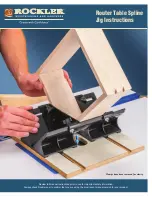
4(6)
GB
Minilux Sensor PIR 41-262 / 41-272
Fitting and operating instructions
1. Application
The Minilux Sensor PIR 41-262 and 41-272 are used
in conjunction with a Minilux / Luxstat Control for
lighting control.
Areas where lighting control can be of benefit:
- Corridors
- Exhibition halls
- Office premises
- Conference premises
- School premises
- Production premises
- Canteens
- Sports halls
- Lounges
- Warehouses
2. Function
Sensor PIR 41-262 with built-in light sensor
Sensor PIR 41-272 without built-in light sensor
Depending on which kind of Controller is con-
nected, the Minilux PIR 41-2x2 Sensor turns on the
light in the room. The light is turned off automatically
after a preset period, when the PIR 41-2x2 Sensor
does not detect activity in the coverage area.
The light sensor built into the 41-262 enables
daylight-dependent control, which is typically used in
outdoor systems.
3. Installation
Placement:
The sensors respond to heat and movement in
relation to the surroundings.
The sensors are most sensitive when movements
(direction of walking) take place diagonally or across
the “beams”. Figs 1 and 2
Avoid locating close to “heat sources”: cookers,
electric radiators, ventilation systems, ceiling
mobiles and similar devices. This could result in
undesirable activation. Fig. 3.
To open the sensor, insert screwdriver into recess
and turn. Fig. 4.
In the case of outdoor installation, the sensor must
be fitted with a protective cap (type 41-902). Fig. 4.
Bear in mind that partitions, glass, plants, furniture
etc. will block the “beams”. Fig. 5.
Problem:
Sensor PIR 41-262 fails to switch on
1. Incorrect connection
1. Check that the sensor is connected as shown in
Figs. 7 or 8.
2. The sensor does not receive any power supply
(24V on terminals 1 and 2)
2. Check that the controller is connected correctly.
No / poor detection in walk test
1. Front panel is not fitted
1. Fit the front panel
2. The front panel faces the wrong way
2. Turn the front panel so that the sensor is
assembled as shown on the dimensional sketch
on page 1.
3. Incorrect location
3. Position the sensor as shown in Figs 1, 2, 3 and
5.
Remove the cover/clean the sensor as described
in item 6.
If the lens is defective, the sensor must be
replaced.
4. The lens is covered/dirty or defective
4.
Possible cause:
Proposed solution:
Fitting:
Fit the sensors on a wall with the bracket supplied
or directly in a corner. To bend the bracket, see Fig.
6.
Make sure the sensor is not turned upside down. Use
the dimensional sketch on the front cover as reference.
Connection:
Example of use of built-in light sensor, which is an
outdoor system. Fig. 7.
N.B. When connecting several sensors only one
sensor may use the be connected to a light sensor.
Alternatively use a type 41-272.
Example with separately connected light sensor,
which is an indoor system. Fig. 8.
For optimum lighting control, a light sensor should be
located so that it “sees” the incident light. See sketch
in Fig. 8.
Parallel conection of sensors (max. 8), Fig. 9, where
only one built-in light sensor may be used.
Max. length of cable to Minilux Control: 200 m with
2 x 2 x 0.6 mm.
4. Settings
After connection to the power supply, PIR sensors are
ready for operation after 1-2 min. (power-up time).
It is easy to set the sensors by bending the bracket.
V indicates angle of bend and M range in metres.
Fig. 10.
For max. range the sensors should be fitted flat
against a wall (V=0°).
The lens takes account of the necessary inclination
to the ground.
If the printed circuit board has been disassembled,
the distance between the enclosure and PCB must
be 1 mm. Fig. 10.
Sensitivity can be set on the potentiometer. Fig. 11.
The factory setting is for use under normal conditions.
If special circumstances mean that the sensor is too
sensitive or not sufficiently sensitive, this can be
optimised by correcting on the potentiometer.
The detection zones can be checked by using the
built-in walk test. Fig. 12.
Remember: Test only one sensor at a time.
In test pos. B, a light-emitting diode will light up
each time the sensor registers a movement.
After the walk test has been completed, remember
to return the jumper to pos. A
N.B. The lens must be fitted in a walk test.
5. Troubleshooting
6. Maintenance
Dirt affects the operation of the sensor and the
sensor’s lens must therefore be kept clean. Use a
damp cloth for cleaning. Use water mixed with
ordinary detergent. Avoid pressing hard on the lens
on the front panel.
If the lens or other parts of the sensor are defective,
it/they must be replaced.
7. Technical data
Input:
Supply voltage ................................ 24VDC ±10%
Power consumption:
Worst case ....................................... <5mA (24VDC)
Standby ........................................... <3mA (24VDC)
Output:
Max. current load ............................ 50mA (24VDC)
Output signal PIR ............................. ON/OFF, NPN
Output voltage Lux (41-262) .......... 0 - 10V
Preformance:
Lux range (41-262) ........................ 3 - 300 lux
Range .............................................. 90
°
, 0.5...15 m
Tightness ......................................... IP 20
With cap 41-902 .............................. IP 54
Ambient temp. ................................. -20
°
C +50
°
C
Cable bush ...................................... 2 x 6 mm dia.
Approvals:
CE according to .............................. EN 60669-2-1
8. Accessories
IP 54 cap .......................................... 41-902























